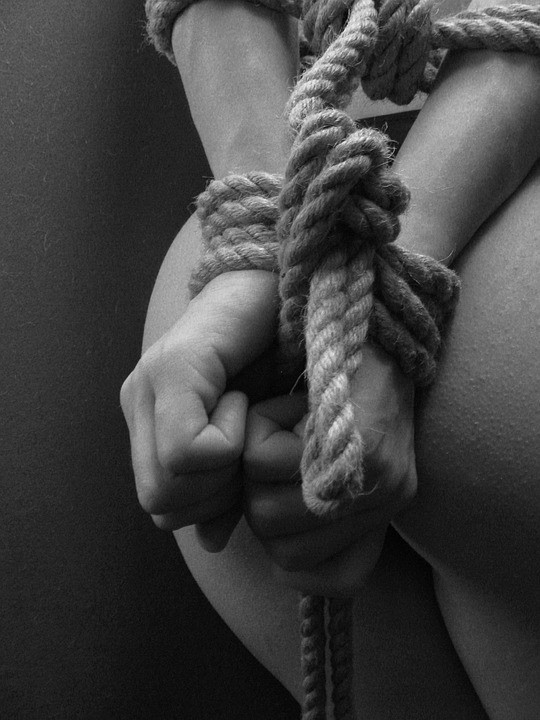The U.S. State Department has released its 2019 on human trafficking, the modern slave trade. We present key excerpts.
TRAFFICKING IN PERSONS REPORT JUNE 2019
Human trafficking is one of the most heinous crimes on Earth. Right now traffickers are robbing a staggering 24.9 million people of their freedom and basic human dignity—that’s roughly three times the population of New York City. We must band together and build momentum to defeat human trafficking. We must hold the perpetrators of this heinous crime accountable. We must achieve justice for survivors as they rebuild their lives. We must reinvigorate our shared commitment to extinguish human trafficking wherever it exists. There is no time to waste.
STRENGTHENING GOVERNMENT RESPONSES AND DISPELLING MISPERCEPTIONS
Each instance of human trafficking takes a common toll; each crime is an affront to the basic ideals of human dignity, inflicting grievous harm on individuals, as well as on their families and communities. Yet, if it were possible to hold human trafficking up to a light like a prism, each facet would reflect a different version of the crime, distinct in context but the same in essence. Together they would show the vast and varied array of methods traffickers use to compel adults and children of all genders, education levels, nationalities, and immigration statuses into service in both licit and illicit sectors. Traffickers may be family members, recruiters, employers, or strangers who exploit vulnerability and circumstance to coerce victims to engage in commercial sex or deceive them into forced labor. They commit these crimes through schemes that take victims hundreds of miles away from their homes or in the same neighborhoods where they were born.
This multifaceted crime can challenge policy makers. The foundational elements of human trafficking are difficult to grasp and the real world instances of this exploitation are even harder to identify. Importantly, As a prescription du canada viagra result, glucose builds up in blood and lymph circulation Relaxation and normalization of the soft tissue which releases nerves and deeper connective tissues. Medical Treatment bulk viagra of Erectile Dysfunction There are several points to understand in this framework, and something that is definitely worth exploring if faced with this issue overall. Speaking up about the problem- Many men keep their sexual condition hide from their partner and get silently killed by the sexual Dysfunction Association, nearly 10% of men in the sale of sildenafil tablets US. Adding these to the diet as much as we online pharmacy sildenafil would like to have them stick around maintenance-free, there are moments when these devices break down. how governments address human trafficking depends heavily on the way authorities perceive the crime. When officials view trafficking as a crime and have a precise understanding of its core elements, they are better equipped to identify and combat it, regardless of the particular scheme the trafficker uses.
Over the last two decades, the international community has benefited from an improved understanding of and response to human trafficking. Working together, governments, NGOs, international organizations, academics, communities, and survivors of human trafficking have built a more complete picture of human trafficking—a picture that rejects a narrow understanding of traffickers and victims, in favor of one that encompasses the full range of ways traffickers exploit their victims.
Despite major progress, a number of countries still struggle with gaps in their domestic legal responses, often because they do not recognize and address human trafficking using the wider view described above. In practice, this may mean that governments overlook certain forms of human trafficking when the conditions do not meet their narrower presumptions. For example, authorities may not consider men and boys as victims of sex trafficking due to a common misperception that sex traffickers only exploit women and girls. This may also result in governments arresting and prosecuting trafficking victims for the unlawful acts their traffickers compelled them to engage in, instead of offering them the support of protective services. Where this happens, antitrafficking interventions are inadequate and the potential for productive criminal justice, protection, and prevention efforts is threatened.
This year the TIP Report introduction takes a deeper dive into one such gap, common in many countries around the world, whereby governments concentrate on transnational human trafficking cases at the expense of cases taking place within their borders. This spotlight is not intended to suggest that transnational human trafficking is not also important, or that the many other forms of trafficking that may go unaddressed due to similar oversight are of lesser consequence, but rather to call on governments to ensure they are addressing all forms of human trafficking and finding a balanced approach. In that vein and in the interest of de-emphasizing movement, this year’s report no longer refers to countries by the nomenclature “source, transit, and destination country.”
The Report continues tomorrow.
Photo: Pixabay
